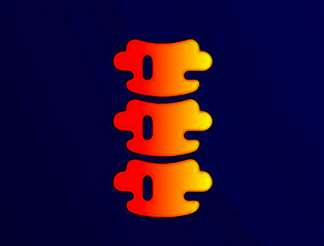Osteoarthritis and Rheumatoid Arthritis | Causes and Treatment
What is Arthritis?
Arthritis is not a single disease, it is an umbrella term for more than 100 types of diseases involving one or more joints of your body. The most common types of arthritis are osteoarthritis and rheumatoid arthritis.
Pathophysiology of Osteoarthritis
In the past, osteoarthritis was commonly considered a mechanical ‘wear and tear’ of the lining (known as articular cartilage) between your bones that comes with age and overuse. However, research shows that the breaking down of the articular cartilage is actually largely due to an imbalance in our cellular activity. Our articular cartilage is continually being broken down and replaced by specific cells, it is a natural process that occurs in every person at all ages. Osteoarthritis occurs when the cells that break down your articular cartilage outperform the cells that repair the articular cartilage. As a result there is a gradual loss of articular cartilage in our joints, leading to pain and dysfunction.
Pathophysiology of Rheumatoid Arthritis
Rheumatoid arthritis is an autoimmune disease, meaning it is a disorder where your body’s immune system attacks its own joints. The cause of rheumatoid arthritis is largely unknown.
Risk Factors for Osteoarthritis
Osteoarthritis is not entirely due to mechanical wear and tear, however there are risk factors that can increase your risk of developing osteoarthritis, they include:
- Sedentary lifestyle
- Lack of strength
- Obesity
- Poor posture
- History of bone/joint injury (such as bone fracture)
- Female sex
Risk Factors of Rheumatoid Arthritis
- Family history of rheumatoid arthritis
- Cigarette smoking
- Certain genetic factors
Symptoms
- Pain of the affected joint
- Hip and knee more common in osteoarthritis
- Ankle, fingers, hands/wrist more common in rheumatoid arthritis
- Limited range of motion
- Swelling
- Heat and redness of the affected joint (more common in rheumatoid arthritis)
Diagnosis
Osteoarthritis is diagnosed through an X-ray scan of the affected joint. It may be scary to see phrases on your report that read, “reduced joint space” or “osteophytes” or “degeneration”. However the important thing to know is that these natural changes can occur in people without any pain or osteoarthritis. Rheumatoid arthritis is often diagnosed through assessing history and a physical examination, along with blood tests from your doctor.
Treatment
Having arthritis does not mean you should stop moving, and it certainly does not mean we cannot improve your pain and function. It is important to identify the contributing factors that are worsening your joint pain, and find strategies to minimise joint degradation. Often, people with arthritis present with several of the above contributing factors, and they can be altered to have a positive impact on your pain and disability. Treatment may include manual therapy, along with specific exercises to improve the loading through the affected joint by strengthening surrounding muscles and improving joint alignment. People with rheumatoid arthritis often manage with medication, exercises and cold therapy.
Osteoarthritis and rheumatoid arthritis are common and debilitating conditions, so it is important to address all the factors that are influencing your condition. Osteoarthritis may be prevented by staying active, improving strength and maintaining a healthy weight.
Joint Replacement Surgery for Osteoarthritis?
You may have been told that you will need a joint replacement surgery. It is true that some people with moderate to severe osteoarthritis will eventually get surgery, and see good outcomes from the treatment, other people (especially with milder cases of osteoarthritis) can avoid the need for surgery with physiotherapy intervention, staying strong and active, and reducing body weight if necessary. It is important to know that surgery is not a quick-fix and the recovery process will be lengthy. Regardless of which option you choose, it is beneficial to improve your physical function prior to surgery so you can get a better baseline functioning for an easier post-op recovery. Physiotherapy is highly important after joint replacement surgery to improve your strength and function so you can get back in action.
How We Can Help?
You can always BOOK ONLINE to see one of our experienced Podiatrist and Physiotherapist or simply Call Adelaide Physio And Podiatry Clinic to schedule a time that suits you.
We’ll help you find the right solution to alleviate your pain.
